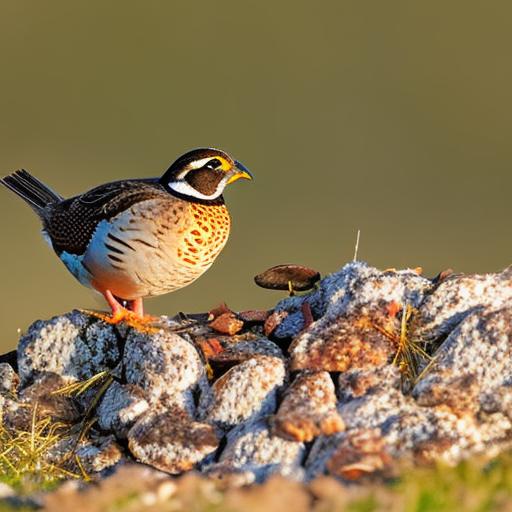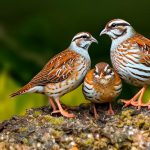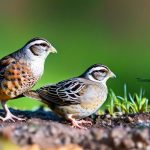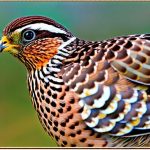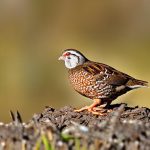Quails are small, ground-dwelling birds that are known for their social behavior and tendency to form flocks. They are also known for their skittish nature and ability to startle easily, which makes them prone to flight when they feel threatened. Understanding quail behavior is crucial when it comes to creating a secure enclosure for them. Quails are diurnal birds, meaning they are most active during the day and rest at night. They are also known for their foraging behavior, as they spend a significant amount of time searching for food on the ground. Quails are also known for their nesting behavior, as they build their nests on the ground and lay their eggs in a shallow depression lined with grass and other plant materials. By understanding these behaviors, you can create an enclosure that meets their needs and minimizes stress.
Quails are also known for their strong flocking instinct, which means they prefer to be in the company of other quails. This social behavior is important to consider when housing quails, as they may become stressed or anxious if they are kept in isolation. It is recommended to keep quails in small groups to mimic their natural flocking behavior and provide them with companionship. Additionally, quails are known for their ability to fly short distances, especially when they feel threatened. This flight response is an important consideration when designing an enclosure for quails, as it is essential to prevent them from escaping and protect them from potential predators. By understanding these natural behaviors, you can create an enclosure that provides a safe and comfortable environment for quails to thrive.
Key Takeaways
- Quail are ground-dwelling birds that prefer to stay close to cover and are easily stressed by loud noises and sudden movements.
- A secure enclosure for quail should have a solid bottom to prevent digging predators from entering and a roof to protect from aerial predators.
- Clipping quail wings can prevent them from flying away, but it should be done carefully and only when necessary.
- Quail need adequate shelter from extreme weather conditions, such as heat, cold, and rain, to thrive in captivity.
- Minimizing stress in quail can be achieved by providing a quiet and calm environment, avoiding overcrowding, and handling them gently.
- Visual deterrents, such as scarecrows or reflective objects, can help keep predators away from the quail enclosure.
- Regular monitoring and maintenance of the enclosure is essential to ensure the safety and well-being of the quail.
Creating a Secure Enclosure
When it comes to creating a secure enclosure for quails, there are several important factors to consider. The first step is to choose an appropriate location for the enclosure, taking into account the natural behaviors of quails. It is important to select a location that provides ample space for the quails to forage and move around, while also offering protection from predators and the elements. The enclosure should be situated in an area with good drainage and ample sunlight, as quails require access to sunlight for their overall health and well-being.
The next step is to construct a sturdy and secure fence around the enclosure to prevent quails from escaping and protect them from potential predators. The fence should be at least 3 feet high and buried at least 6 inches into the ground to prevent quails from digging underneath it. Additionally, the fence should be made of durable materials such as wire mesh or hardware cloth to withstand the attempts of predators to break into the enclosure. It is also important to cover the top of the enclosure with netting or wire mesh to prevent predators from entering from above.
In addition to the fence, it is important to provide adequate shelter within the enclosure for the quails to seek refuge from predators and inclement weather. This can be in the form of shrubs, bushes, or small structures such as wooden shelters or coops. These shelters should be strategically placed throughout the enclosure to provide ample hiding spots for the quails. By creating a secure enclosure that takes into account the natural behaviors of quails and provides protection from predators and the elements, you can ensure the safety and well-being of your quail flock.
Clipping Quail Wings
Clipping quail wings is a common practice among quail owners to prevent them from flying over fences and escaping from their enclosures. This procedure involves trimming the primary flight feathers on one wing of each quail to disrupt their ability to achieve lift and fly long distances. It is important to note that wing clipping should be done with caution and only when necessary, as it can cause stress and discomfort to the quails if not done properly.
Before clipping quail wings, it is important to gather the necessary tools, including sharp scissors or poultry shears, styptic powder or cornstarch to stop any bleeding, and a helper to hold the quail securely during the procedure. It is also important to have a plan in place for safely restraining the quail during wing clipping to minimize stress and prevent injury. When clipping the wings, it is crucial to only trim the primary flight feathers on one wing, leaving the other wing intact to maintain balance and stability.
It is important to note that wing clipping should be done with caution and only when necessary, as it can cause stress and discomfort to the quails if not done properly. Additionally, wing clipping should be done in a way that does not cause pain or injury to the quail. After wing clipping, it is important to monitor the quails closely for any signs of stress or discomfort and provide them with extra care and attention during this time. By following proper procedures and taking necessary precautions, wing clipping can be an effective way to prevent quails from escaping their enclosures while ensuring their safety and well-being.
Providing Adequate Shelter
Providing adequate shelter within the quail enclosure is essential for ensuring the safety and well-being of the quails. Shelter not only protects them from predators but also provides a place for them to seek refuge from inclement weather and extreme temperatures. When it comes to providing shelter for quails, there are several options to consider, including natural vegetation, artificial structures, and purpose-built coops or shelters.
Natural vegetation such as shrubs, bushes, and tall grasses can provide excellent shelter for quails within the enclosure. These plants offer hiding spots for the quails to escape from predators and seek shade during hot weather. Additionally, natural vegetation can also provide food sources for the quails, such as seeds and insects, further enhancing their habitat within the enclosure.
Artificial structures such as wooden shelters or small coops can also provide excellent shelter for quails within the enclosure. These structures should be well-ventilated and provide ample space for the quails to move around comfortably. Additionally, they should be predator-proof with secure doors and windows to prevent unwanted entry by predators.
Purpose-built coops or shelters can also be constructed within the enclosure to provide additional protection and shelter for the quails. These coops should be designed with the specific needs of quails in mind, including proper ventilation, insulation, and protection from predators. By providing adequate shelter within the enclosure, you can ensure that your quails have a safe and comfortable environment in which to thrive.
Minimizing Stress
Minimizing stress is crucial for maintaining the health and well-being of quails within their enclosure. Stress can have a negative impact on quail behavior, immune function, and overall productivity. There are several strategies that can be implemented to minimize stress within the quail enclosure, including providing ample space, reducing noise and disturbances, maintaining a consistent routine, and ensuring proper nutrition.
Providing ample space within the enclosure is essential for minimizing stress among quails. Overcrowding can lead to aggressive behavior, competition for resources, and increased stress levels among the flock. It is important to provide enough space for the quails to move around comfortably, forage for food, and engage in natural behaviors without feeling crowded or confined.
Reducing noise and disturbances within the enclosure can also help minimize stress among quails. Loud noises, sudden movements, and frequent disturbances can startle quails and cause them to become anxious or stressed. It is important to keep noise levels low around the enclosure and minimize disturbances as much as possible to create a calm and peaceful environment for the quails.
Maintaining a consistent routine within the enclosure can also help minimize stress among quails. Quails thrive on routine and predictability, so it is important to establish a regular feeding schedule, cleaning routine, and maintenance schedule within the enclosure. This helps reduce anxiety and uncertainty among the quails, leading to lower stress levels overall.
Ensuring proper nutrition is also essential for minimizing stress among quails. A balanced diet that meets their nutritional needs is crucial for maintaining their health and well-being. It is important to provide access to fresh water at all times and offer a variety of high-quality feed that meets their specific dietary requirements.
By implementing these strategies, you can create a low-stress environment within the quail enclosure that promotes their health and well-being.
Using Visual Deterrents
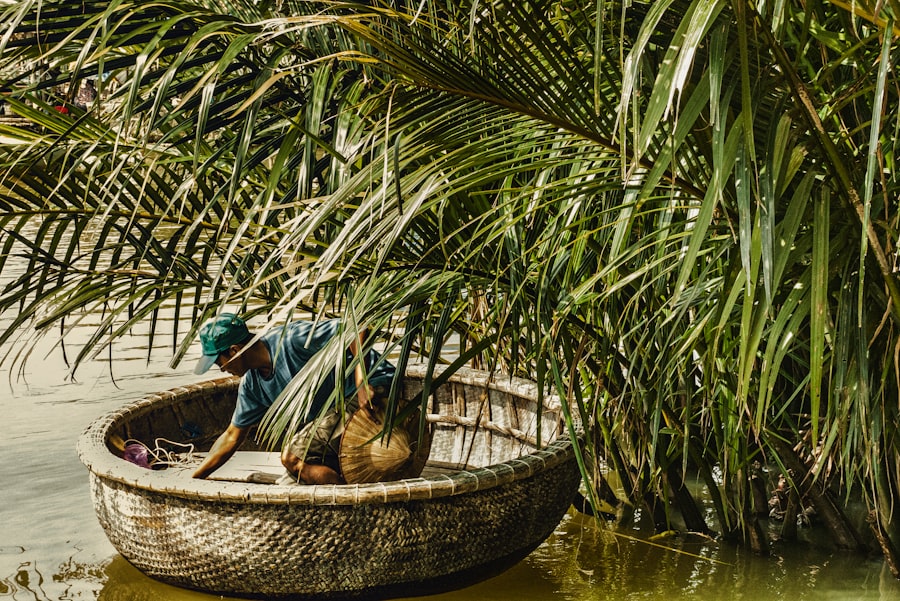
Using visual deterrents is an effective way to deter potential predators from approaching the quail enclosure. Visual deterrents take advantage of a predator’s natural instincts by creating visual stimuli that signal danger or threat. There are several types of visual deterrents that can be used within the quail enclosure, including predator decoys, reflective objects, and scare devices.
Predator decoys such as plastic owls or hawks can be placed strategically around the perimeter of the enclosure to create the illusion of a predator presence. These decoys take advantage of a predator’s natural fear of larger birds of prey and can help deter them from approaching the enclosure.
Reflective objects such as aluminum foil strips or shiny tape can also be used as visual deterrents within the quail enclosure. These objects create flashes of light and movement that can startle potential predators and deter them from approaching. Reflective objects can be hung from fences or stakes around the perimeter of the enclosure to create a visual barrier against predators.
Scare devices such as motion-activated lights or sound emitters can also be used as visual deterrents within the quail enclosure. These devices are triggered by movement or sound and emit bright lights or loud noises that startle potential predators and deter them from approaching.
By using visual deterrents within the quail enclosure, you can create a visual barrier against potential predators and help protect your quail flock from harm.
Regularly Monitoring and Maintaining the Enclosure
Regularly monitoring and maintaining the quail enclosure is essential for ensuring its safety and functionality over time. Monitoring involves regularly checking on the condition of the fence, shelter, food and water sources, as well as observing the behavior of the quails within the enclosure. This allows you to identify any potential issues or hazards early on and take corrective action before they escalate.
Maintaining the enclosure involves performing routine maintenance tasks such as cleaning, repairing any damage or wear-and-tear on structures or equipment, replenishing food and water sources, and ensuring that all safety measures are in place. Regular maintenance helps prevent potential problems from arising and ensures that the enclosure remains secure and functional for the quails.
It is important to inspect the fence regularly for any signs of damage or wear-and-tear that could compromise its integrity. This includes checking for loose wires or mesh, broken posts or stakes, or areas where predators may have attempted to dig underneath. Any issues should be addressed promptly to maintain a secure perimeter around the enclosure.
Shelters within the enclosure should also be inspected regularly for any signs of damage or deterioration that could compromise their ability to provide adequate protection for the quails. This includes checking for leaks, drafts, or structural damage that could make them vulnerable to predators or inclement weather.
Food and water sources within the enclosure should be replenished regularly to ensure that the quails have access to fresh food and water at all times. It is important to clean feeders and waterers regularly to prevent contamination or spoilage that could affect the health of the quails.
By regularly monitoring and maintaining the enclosure, you can ensure that it remains secure and functional for your quail flock while minimizing potential risks or hazards that could compromise their safety and well-being.
Regular monitoring and maintenance of the enclosure includes checking for any signs of wear and tear, repairing any damaged areas, and ensuring that all doors and latches are secure. It also involves regularly cleaning the enclosure to prevent the buildup of waste and bacteria, as well as inspecting for any potential hazards such as sharp edges, loose wires, or other objects that could harm the quail. Additionally, maintaining proper ventilation and providing adequate shelter from the elements are essential for the health and comfort of the quail. By staying proactive in the care of the enclosure, you can create a safe and comfortable environment for your quail flock to thrive.
Certainly! Here’s the paragraph with the related article included as an tag:
If you’re looking for ways to keep quail from flying, you may also be interested in learning how to insulate a chicken coop. Proper insulation can help maintain a comfortable environment for your poultry and prevent them from feeling the need to escape. Check out this informative article on how to insulate a chicken coop for valuable tips on creating a cozy and secure space for your birds.
FAQs
What are some methods to keep quail from flying?
Some methods to keep quail from flying include clipping their flight feathers, providing a covered or enclosed area for them to roam, and using netting or wire mesh to create a barrier.
Is it safe to clip a quail’s flight feathers?
Yes, it is safe to clip a quail’s flight feathers if done properly. This can be done by trimming the primary flight feathers on one wing, which will prevent the quail from achieving lift and flying away.
What type of enclosure is best for keeping quail from flying?
An enclosed area with a roof or cover is best for keeping quail from flying. This can be a small aviary or a covered pen that provides enough space for the quail to move around while preventing them from flying away.
Can netting or wire mesh be used to keep quail from flying?
Yes, netting or wire mesh can be used to create a barrier and prevent quail from flying away. This can be used to cover the top of an outdoor enclosure or to create a barrier around the perimeter to keep the quail contained.
Meet Walter, the feathered-friend fanatic of Florida! Nestled in the sunshine state, Walter struts through life with his feathered companions, clucking his way to happiness. With a coop that’s fancier than a five-star hotel, he’s the Don Juan of the chicken world. When he’s not teaching his hens to do the cha-cha, you’ll find him in a heated debate with his prized rooster, Sir Clucks-a-Lot. Walter’s poultry passion is no yolk; he’s the sunny-side-up guy you never knew you needed in your flock of friends!

